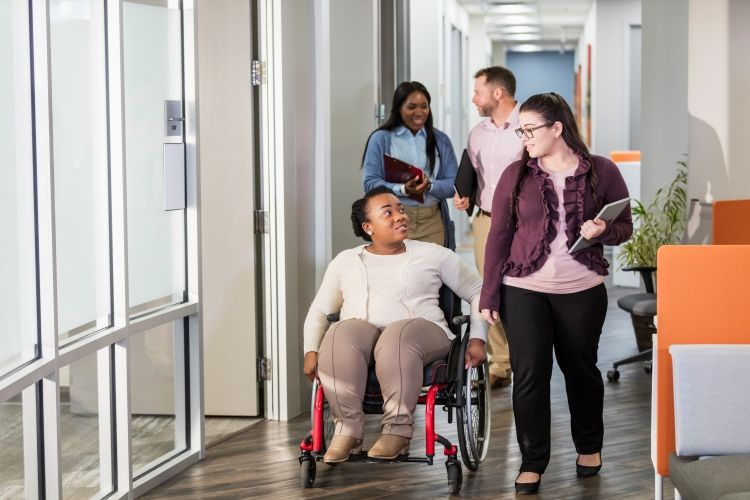Creating a workplace that champions inclusivity is not just a legal obligation but a moral imperative. The term ‘disability’ encompasses a diverse range of conditions, and fostering an environment that recognizes and supports individuals with different abilities is crucial. This article explores strategies for building disability-friendly workplaces that prioritize inclusivity and empower employees of all abilities
Understanding Disability:
The term ‘disability’ refers to a broad spectrum of conditions that may impact an individual’s physical, cognitive, sensory, or mental functions. It is important to recognize that disabilities vary widely, and each person with a disability has unique strengths and challenges.
Different Disabilities, One Inclusive Workplace:
Creating a disability-friendly workplace involves acknowledging and accommodating different disabilities. This includes physical disabilities, intellectual disabilities in adults, sensory impairments, and mental health conditions. By embracing diversity, employers can tap into a wealth of talents and perspectives
Government Disability Support:
Governments often provide support for individuals with disabilities, including financial assistance, healthcare benefits, and vocational rehabilitation programs. Employers can collaborate with government disability services to ensure that employees receive the necessary support both within and outside the workplace.
Benefits for Disabled People:
Understanding the benefits available for disabled people is essential for employers seeking to create an inclusive workplace. This includes short-term disability benefits for temporary health conditions and long-term disability benefits for more permanent disabilities. Offering comprehensive benefits demonstrates a commitment to the well-being of all employees.
Rights of Persons with Disabilities:
Respecting the rights of persons with disabilities is not only ethical but also a legal obligation. Ensuring equal opportunities, reasonable accommodations, and protection against discrimination are key components of upholding the rights of individuals with disabilities in the workplace.
Person-Centered Approach:
Adopting a person-centered approach involves recognizing the unique needs of each employee with a disability. This may involve providing assistive technologies, flexible work schedules, or modifying the physical workspace to enhance accessibility. Tailoring accommodations to individual requirements fosters a supportive and inclusive environment.
Social Disability Awareness:
Promoting social disability awareness within the workplace is vital for creating an atmosphere of understanding and respect. Training programs, workshops, and awareness campaigns can help break down stereotypes and eliminate misconceptions about disabilities, fostering a more inclusive work culture.
Disability-Friendly Services:
Offering disability-friendly services within the workplace goes beyond accommodation. It involves providing resources such as accessible facilities, communication aids, and mental health support services. These services ensure that employees with disabilities can fully participate in all aspects of work life.
Leading by Example:
Leadership plays a pivotal role in shaping the culture of a workplace. When leaders champion inclusivity and actively support employees with disabilities, it sets the tone for the entire organization. Leading by example creates a positive environment where everyone feels valued and respected.
Championing inclusivity in the workplace is a continuous journey that requires commitment, awareness, and proactive measures. By understanding the meaning of disability, embracing diversity, respecting rights, and implementing person-centered strategies, employers can create environments that empower individuals of all abilities to thrive. Ultimately, a disability-friendly workplace not only benefits employees but also contributes to a more innovative, resilient, and harmonious organizational culture.

